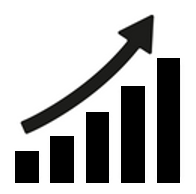Some marketers consider a funnel as a key to success in digital marketing and some rely on the website. To find out the difference between a funnel and a website, these two marketing tools need to be defined.
What Is a Funnel?
A funnel represents the Buyer’s journey. It involves the stages the user goes through from finding out about your B2B SaaS to converting to a customer.
There are different stages in the marketing funnel: the Awareness, Consideration, and Decision stage. In the first stage, the lead finds out about your B2B SaaS, the solution your product offers and is attracted to. In the next stage, your lead is engaged and nurtured by the content you provide about your B2B SaaS. In the last stage, you delight your target audience with your product so that they make the decision to purchase it. Then starts the sales funnel where the user takes action and converts to a customer.
What Is a Website?
A website is a collection of web pages that are interconnected and operated under a single web domain. There are different web pages, blog posts, images, videos, and other digital types of content on the website. The pages on a website have a common root URL and are found on a single server. Therefore, the URLs of pages are organized into a hierarchy and the hyperlinks between are organized to increase traffic flow. A website makes you visible on search engines and in order to appear high in search, it needs to be optimized. Also, a website is a sign of credibility because the clients will have proof that your company is functioning and will know how to contact you.
Website vs Sales Funnel
You can promote your B2B SaaS with a website and a sales funnel. Nonetheless, the core difference in these platforms is in their structure. The website is open for a variety of people and may include various content. The sales funnel is designed to gradually lead your B2B SaaS audience to conversion. Here are some other basic differences between a website and a sales funnel.
The Flow of Traffic
The major difference between a funnel and a website is the flow of traffic. On the funnel, the traffic flows linearly from the awareness stage to conversion. On a website, the flow is nonlinear and is scattered around. The audience on a website views content by directly clicking on the tabs or opening the links on the website. Therefore, the leads of various quality may read the same content.
Conversion Rates
The funnel structure has many leaks, therefore, it is necessary to optimize it to keep your B2B SaaS target audience engaged. On a sales funnel, you need to ensure that it is relevant and specialized on every stage to help users successfully move down your B2B SaaS funnel. You need to understand your target audience well to show them how their pain points can be solved with your product. However, on the website, your B2B SaaS prospects may be lost or overwhelmed with information.
Also, there may be too many calls-of-action, which may confuse your readers. The sales funnel will present a defined path of the Buyer’s journey. Your B2B SaaS prospects will only have one link that will lead them to conversion.
Landing Page vs Sales Funnel
When comparing a website and a funnel, it’s useful to see the difference between a landing page and a sales funnel. A landing page is a single web page with a specific call-to-action, while a sales funnel consists of many web pages that lead the user to conversion. Also, the pages in the funnel may sell different opportunities, using upselling.
The choice of a landing page or a sales funnel depends on your product. If your B2B SaaS has a variety of complementary services, then a funnel is your best choice. However, if you only offer a single decision to your customers, such as participating in a webinar or purchasing the product, then a landing page will provide better and faster results.
How Can a Funnel and a Website Be Used Together?
Funnels and websites can also be used together. Websites present a variety of pages with information that targets different segments of prospects, and funnels are more specific. Websites may have several funnels. For instance, a blog or web pages can be used to drive traffic to different funnels. Therefore, it’s most beneficial when a funnel and a website are used together. While a well-developed website is used for customer conversion, a funnel is used for addressing the target audience with relevant and specific content at every stage.
Therefore, a website and a funnel are different in structure and the way of functioning. However, they lead to a single goal – customer conversion. The choice of a website or a funnel depends on your B2B SaaS. Nonetheless, it’s also beneficial to use both.
P.S. By the way, you may be interested to learn which B2B SaaS Marketing Agency can help you with marketing – and you came to the right place. Check us out at, “Revenue, Inc.” 😉
